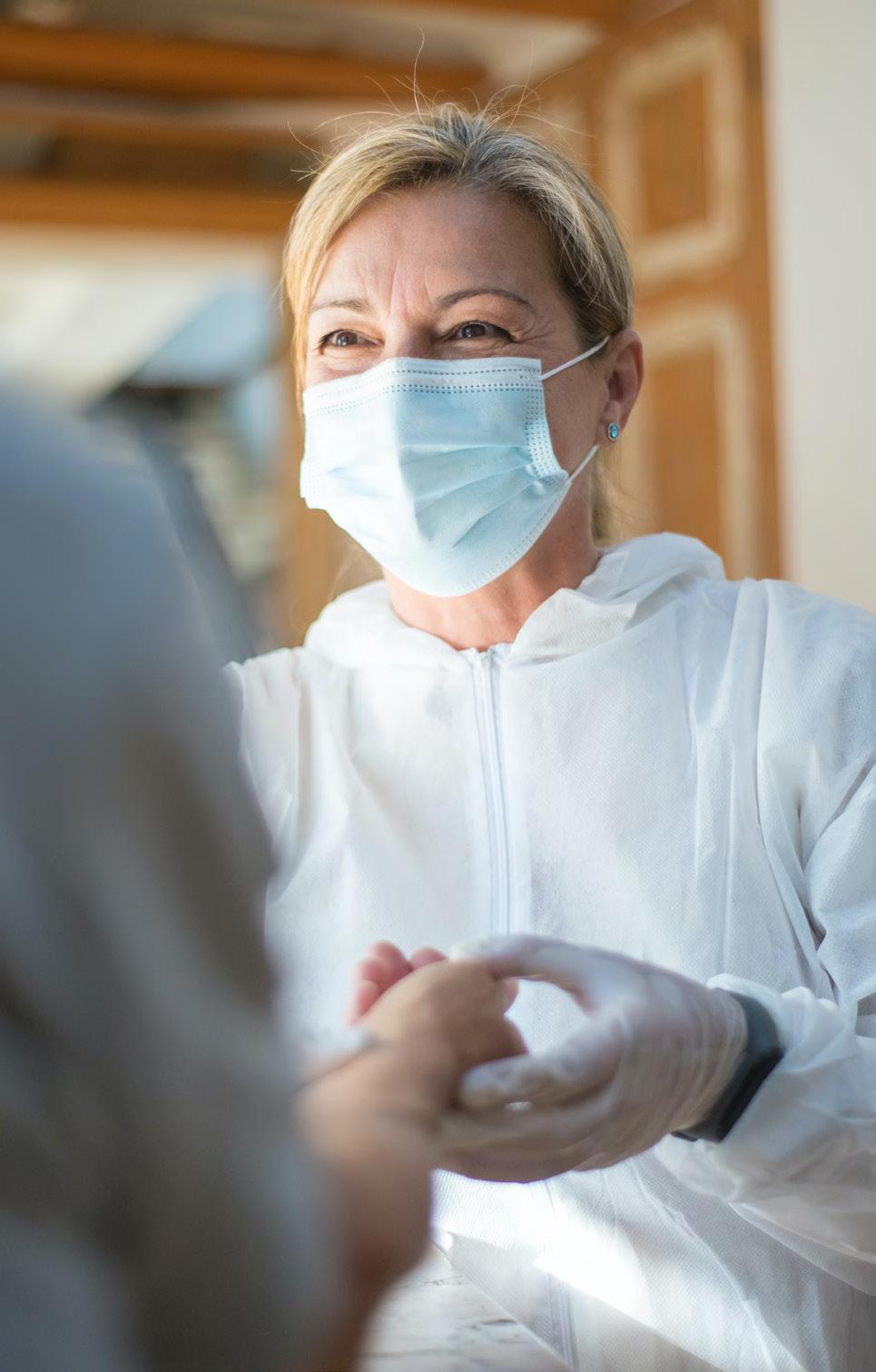
3 minute read
Efficient energy use to reduce emissions
from Health Business 23.3
by PSI Media
Wirral University Teaching Hospital NHS Foundation Trust has a Green Plan to cover 2022 to 2025, with a major focus on energy
In the foreword to the Green Plan, Matthew Swanborough, director of strategy & partnerships, recognises the need to ensure delivery of safe care, while at the same time recognising the responsibility to reduce impact on the environment.
The Wirral Peninsular, where the trust is located has already seen the effects of climate change, with longer dry spells and more frequent heat waves, warmer and wetter winters, more storms and floods, and a rise in sea levels – a worry being located on the coast. Swanborough said: “As most of us will be aware, reaching net-zero emissions is high on the agenda at present and while the Trust already incorporates sustainability in many aspects of its activities, we also recognise that more can be done, and we are committed to making the necessary changes to contribute to net-zero. This document will set out actions and targets for different areas of focus, these will be monitored annually to ensure we reach our netzero target by 2040/45.”
Sustainability and low carbon
The trust’s green plan aims to embed sustainability and low carbon practice in the way that healthcare services are offered and at the same time, help the NHS to become the first health service in the world with net zero greenhouse gas emissions.
The trust recognises that the climate crisis is also a health crisis, with rising temperatures and extreme weather disrupting care and impacting the health of patients.
The Green Plan is to be reviewed annually.
Areas of Focus
The vision of the Green Plan has a focus on Net Zero and Resource consumption and Greenhouse Gas emission reductions that align with NHS net zero targets. Climate Resilience is a key factor, including reducing the environmental impact of the trust’s activities and providing a basis to become a climatechange-resilient organisation.
The Green Plan has nine Areas of Focus, with actions to be achieved within the three years covered by the plan. These areas include Workforce and Systems Leadership, Sustainable Models of Care, Digital Transformation, Travel and Transport, Estates and Facilities, Medicines, Supply Chain and Procurement, Food and Nutrition and Adaptation. E



F The Green Plan links to NHS Net Zero, acknowledging the aim for the NHS Carbon Footprint for the emissions directly controlled to net zero by 2040 and the NHS Carbon Footprint ‘Plus’ for the emissions influenced, to be net zero by 2045.
Emissions
Wirral University Teaching Hospital (WUTH) commits to reduce greenhouse gas emissions to Net Zero to prevent the worst impacts of climate change and meet NHS Net Zero commitments and the plan outlines how it will do this.
As of 2020/21, WUTH’s carbon footprint was 29,451 tCO2e. This means that to reach the net zero goal, the trust needs to avoid around 1100 tCO2e from all sources each year until 2040/45.

After investigation, it was found that 72.8 per cent of the trust’s carbon emissions came from the supply chain and 9 per cent came from patient and visitor travel, areas which are harder to control.

However, 27.2 per cent of emissions are from sources which the trust can control, which include the operation of buildings and transport associated with the delivery of care – including staff travel. Building energy makes up 26.3 per cent of the trust’s emissions – a great place to start when it comes to reducing emissions
Estates and facilities
Estates and Facilities in one of the nine Areas of Focus and this is where energy reduction comes in. The trust acknowledges that providing care 24 hours a day comes with high energy consumption. Therefore, energy use needs to be optimised and there needs to be a move away from the use of fossil fuels.
The trust recognises that energy consumption needs to be reduced by 182,000 kWh per year to achieve the emissions reduction target of 3,376 tCO2e in 2024/25. To achieve this the trust will be following the four-step approach within the NHS’ ‘Estates ‘Net Zero’ Carbon Delivery Plan’. This includes making every kWh count and investing in no-regrets energy-saving measures; preparing buildings for electricity-led heating and upgrading building fabric; switching to nonfossil fuel heating and investing in innovative new energy sources; and increasing on-site renewables and investing in on-site generation. The trust has provided detailed analysis of where its energy emissions come from and why this is.
As well as using renewable energy, the trust also commits to reducing energy consumption overall.

The trust says: “Moving away from fossil fuels is vital to achieve net zero targets: electrically powered heating systems, such as heat pumps and infrared heating, while using a 100 per cent renewable electricity tariff, will result in zero emissions (at point of use).”
The Green Plan concludes: “Climate Change poses many threats to our care population and how we deliver care. This Green Plan will enable us to become an adaptable and resilient organisation. It will help steer our direction of travel with other local anchor institutions, bolstering our ability to provide a continued critical service.
“Our dedicated workforce is core to our care provision and delivery of this Green Plan. With the necessary structures in place, it will be our people and service users who will drive the changes to make us a more sustainable organisation. We will continue an open dialogue with all stakeholders to improve our Green Plans and the care we deliver.” L https://www.wuth.nhs.uk/media/19913/










